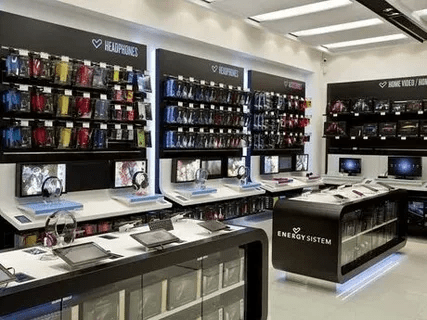Animation is a powerful tool in UI/UX design. When used thoughtfully, it can enhance the user experience (UX) and bring your app’s interface to life. However, it’s not just about making things move; the psychology behind animations can significantly influence how users interact with your app and how they feel during those interactions.
In this article, we’ll dive into the psychology of app animations and how you can design animations that make your UI feel alive while improving usability, engagement, and satisfaction.
Why Animation Matters in UI Design
Animation in UI design isn’t just a visual flourish; it’s a functional and psychological tool that can enhance the way users interact with an app. Here’s why it’s so important:
1. Provides Feedback and Clarification
Animations serve as a visual response to a user’s actions, offering immediate feedback on their input. For example, when a user clicks a button, an animation like a color change or a smooth transition can confirm that the action was received. This feedback reassures users, helping them understand what’s happening.
2. Guides Users and Creates Flow
Animations can guide users through tasks, making complex actions more intuitive. They can direct attention to specific elements of the interface, such as a new feature or a notification, creating a natural flow through the app.
3. Enhances Engagement
A well-designed animation can capture a user’s attention and make their experience more enjoyable. Whether it’s a fun loading animation or a playful icon change, small animations increase engagement and keep users coming back.
4. Establishes Emotional Connection
Animations can make an app feel more human, connecting with users emotionally. Smooth, playful animations can give the app personality, making it feel more interactive and engaging. This emotional connection can lead to increased user satisfaction and loyalty.
Understanding the Psychology of Animation
The effectiveness of animations lies not just in their design, but in how they align with the psychological principles of human behavior. Understanding these principles can help you create animations that resonate with users.
1. Cognitive Load Reduction
When users interact with your app, they rely on their cognitive resources to process information. Overloading them with too much information or too many actions at once can lead to frustration. Animation can reduce cognitive load by providing clarity, making transitions smoother, and guiding users through steps in a way that doesn’t feel overwhelming.
Example: Instead of showing a user a confusing error message, animate the error in a way that clearly communicates what went wrong, guiding the user to resolve it without added stress.
2. Anticipation and Surprise
Humans are wired to anticipate things and react emotionally to surprises. Well-timed animations that change based on user actions can create anticipation, heightening the user’s experience. This can make the app feel responsive and intelligent, as if it’s “reading” the user’s mind.
Example: A button that slightly enlarges when hovered over or tapped creates a feeling of anticipation, signaling that the user is about to interact with it.
3. Affordance and Signifiers
In psychology, affordance refers to the qualities of an object that suggest its use, and signifiers are indicators that communicate how users should interact with it. Animations help reinforce affordance by showing users the expected behavior of interface elements.
Example: A smooth, expanding animation of a menu when clicked helps users understand that the menu can be interacted with and provides the necessary cues on what’s to come.
4. Emotional Response to Movement
Humans are naturally drawn to movement. Animations can evoke emotional responses, from excitement and joy to frustration and anxiety, depending on how they are implemented.
Example: A playful animation that triggers when a user completes a task can generate feelings of accomplishment and satisfaction. On the other hand, sluggish or jerky animations can lead to irritation and disengagement.
Best Practices for Using Animation in Your App Design
1. Keep It Subtle
While animations can enhance the experience, they should never overwhelm the user or distract them from their task. Subtle animations, such as fading, sliding, or changing opacity, can help convey information without being too flashy.
Example: A subtle animation that shows an item being added to a cart can confirm the action without taking away from the overall flow of the shopping experience.
2. Provide Clear Feedback
Animations should offer clear feedback in response to user actions. Whether the action is successful or unsuccessful, animations should indicate the result immediately.
Example: When submitting a form, use a success animation like a checkmark or a color transition to reassure the user that their action has been completed.
3. Make Animations Purposeful
Every animation should have a purpose. Whether it’s providing feedback, creating flow, or emphasizing a call-to-action, make sure the animation serves the user’s goal.
Example: When a user scrolls to the bottom of a page, an animation that scrolls a “back to top” button into view can help them navigate the interface with ease.
4. Control Speed and Timing
The timing of an animation can drastically impact how users perceive it. Animations that are too fast may seem disorienting, while animations that are too slow may frustrate users. Strive for the right balance that feels natural and intuitive.
Example: A smooth fade-in transition when moving from one screen to another ensures a natural feel, whereas a jerky transition might feel jarring and disrupt the experience.
Types of App Animations That Make a Difference
1. Loading Animations
When users are waiting for something to load, an animation can make the wait feel less tedious. Loading animations provide entertainment or feedback, making the user feel like the app is working.
Example: A spinning circle or animated progress bar provides a sense of progress and minimizes the user’s perception of waiting.
2. Transitions Between Screens
Smooth transitions between screens guide users through the app and make it feel more fluid. A swipe or slide transition can make switching between views feel effortless.
Example: A swipe left animation when transitioning from one photo to another in a gallery app creates a seamless experience.
3. Micro-Interactions
Micro-interactions are small animations that occur in response to user actions. They play a vital role in making the interface feel interactive and alive.
Example: When a user taps a heart icon to “like” something, a quick animation such as a bouncing heart makes the interaction feel dynamic.
4. Gesture Animations
With the rise of gesture-based navigation, gestures like swiping or tapping can trigger animations that help users navigate through the app intuitively.
Example: A swipe-to-dismiss gesture where an element slides off the screen can make it feel more responsive and efficient.
Conclusion:
App animations are far more than just eye-catching effects. They are tools that can significantly enhance usability, create emotional connections, and guide users through the app. By understanding the psychology behind animation, you can design interfaces that feel alive, engaging, and intuitive.
Remember to keep animations purposeful, subtle, and in line with your app’s goals. When done right, animations can turn an ordinary user experience into an extraordinary one, making your app more delightful, memorable, and easy to use.
Devoq Design is a premier UI/UX Design Agency in Kollam and UI/UX Design Agency in Faridabad, specializing in delivering user-friendly and innovative digital solutions. Their expert team focuses on creating intuitive interfaces and seamless user experiences, tailored to the specific needs of businesses. Whether in Montana or Nebraska, Devoq Design offers high-quality, customized design services that help businesses enhance their digital presence, engage users, and achieve long-term success.








































































































































































































































































































































































































































































































































































































































































































































































































































































































































































































































